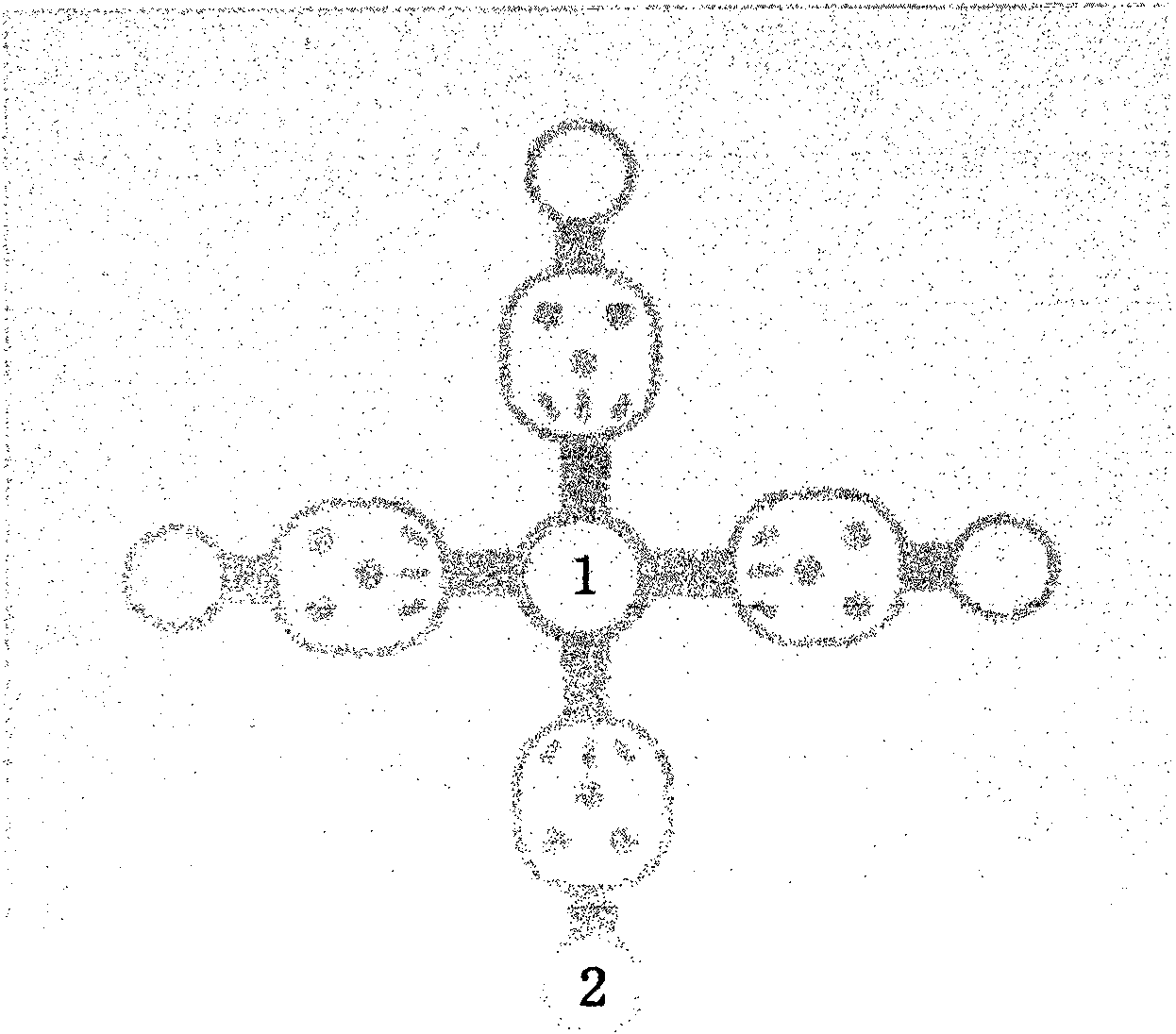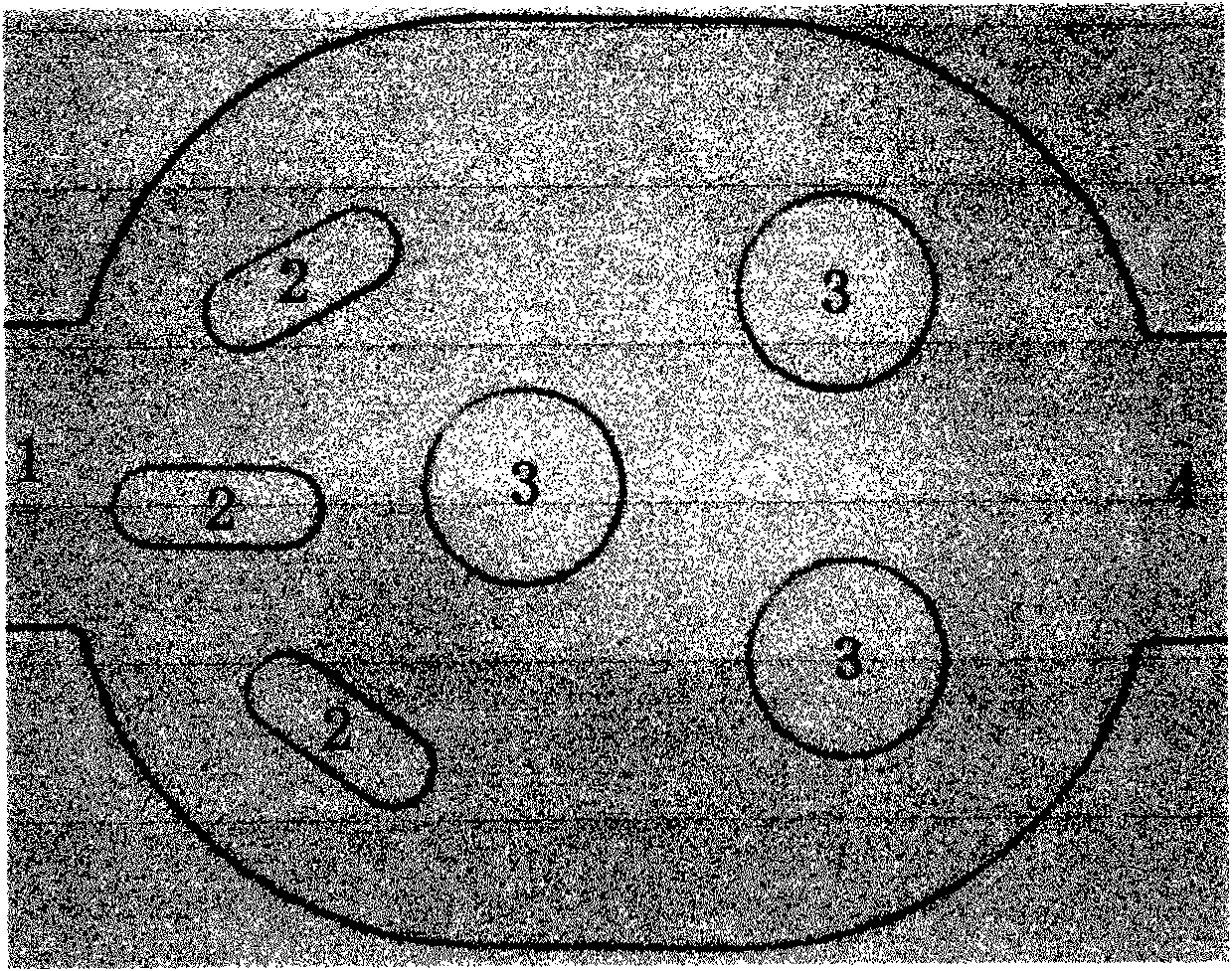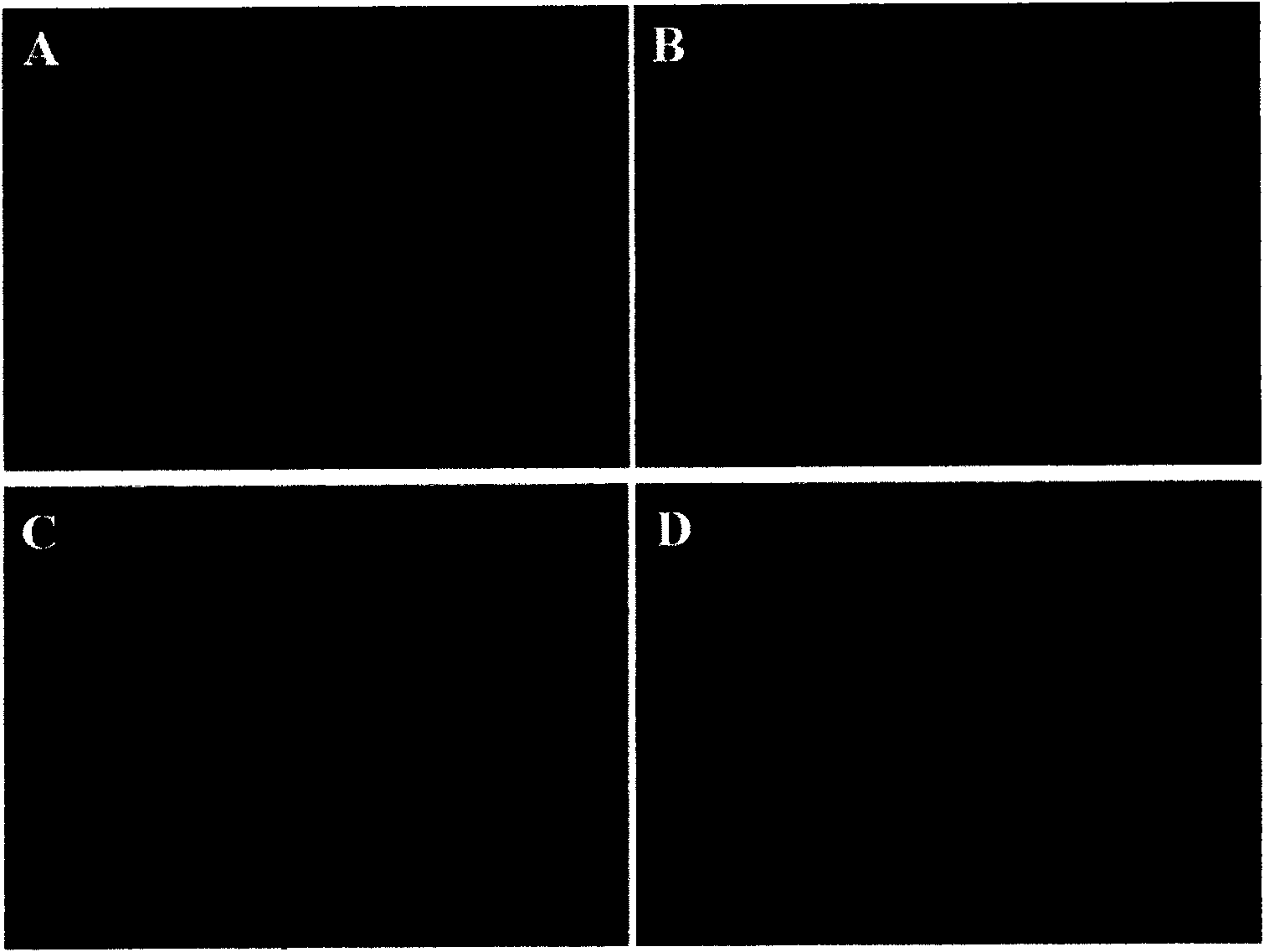Method for detecting cell injury repair ability, and special chip thereof
A cell and chip technology, applied in the field of detection of cell damage repair ability, method and its special chip, can solve the problems of large changes in the size and width of the wound area, difficult control of the initial damage area, and the efficiency of cell damage migration, etc., to achieve easy reversibility Sealing, biocompatibility, high stickiness effect on the bottom surface
- Summary
- Abstract
- Description
- Claims
- Application Information
AI Technical Summary
Problems solved by technology
Method used
Image
Examples
Embodiment 1
[0023] Will figure 1 The chip shown (there are 4 structural units in total, and each structural unit has 3 columnar structures, so 12 cell defect regions with the same size and shape can be generated at the same time) was inoculated with a high concentration (about 10 7 / ml) Human gastric mucosal epithelial cells (GES-1) were placed at 37°C, 5% CO 2 In the incubator overnight, after the cells adhered to the wall and the density was greater than 80%, the microfluidic chip was gently removed. The control group was added with high-sugar DMEM medium containing 12% newborn bovine serum, and the EGF group was added with 90ng / ml EGF and 12% newborn calf serum high-glucose DMEM medium, immediately look for the damaged area under the microscope and take pictures. After taking pictures, continue to place them in the incubator for cultivation, then take pictures every 8 hours, and observe continuously for 24 hours. It can be seen that EGF (90ng / ml) can significantly promote the damage ...
Embodiment 2
[0028] Will figure 1 The indicated chips were inoculated with high concentrations (approximately 10 7 / ml) Human lens epithelial cells cultured in vitro were placed at 37°C, 5% CO 2 After overnight in the incubator, after the cells adhered to the wall and the density was greater than 80%, the microfluidic chip was gently removed, and cells containing different concentrations of basic fibroblast growth factor (basic fibroblast growth factor, b-FGF) were added. culture medium, immediately look for damaged areas under a microscope and take pictures. After taking pictures, continue to place them in the incubator for cultivation, then take pictures every 8 hours, and observe continuously for 24 hours. It can be seen that 5μg / L bFGF can significantly promote the injury repair speed of human lens epithelial cells, and the promotion effect gradually increases with the increase of b-FGF concentration.
PUM
 Login to View More
Login to View More Abstract
Description
Claims
Application Information
 Login to View More
Login to View More - R&D
- Intellectual Property
- Life Sciences
- Materials
- Tech Scout
- Unparalleled Data Quality
- Higher Quality Content
- 60% Fewer Hallucinations
Browse by: Latest US Patents, China's latest patents, Technical Efficacy Thesaurus, Application Domain, Technology Topic, Popular Technical Reports.
© 2025 PatSnap. All rights reserved.Legal|Privacy policy|Modern Slavery Act Transparency Statement|Sitemap|About US| Contact US: help@patsnap.com



